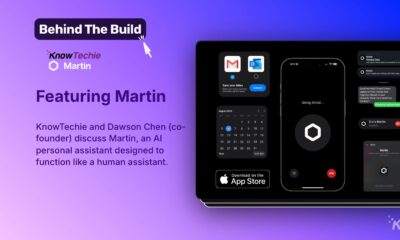Apps
Does this Bionic Reading app really make you a faster reader?
Sadly, the hype may be overblown – if not misleading.

Just a heads up, if you buy something through our links, we may get a small share of the sale. It’s one of the ways we keep the lights on here. Click here for more.
What if something as simple as bolding parts of a word could make reading a breeze, improving your focus, speed and comprehension?
That’s the claim made by the creators of Bionic Reading (Android, iOS), an app that revises texts so that the most concise parts of the words are “highlighted.”
Doing so, according to the makers of the app, directs the eyes to focus on the important parts of the text. Because “your brain reads faster than your eye,” this allows users to read more quickly and efficiently.
READ MORE: Tesla Autopilot crashes have big implications for self-driving cars
Early adopters have raved about the app on social media – including some users with attention-deficit/hyperactivity disorder and dyslexia. But as an educational psychologist who researches reading in print and digital mediums, I think the hype is overblown – if not misleading.
Shaky claims
On the Bionic Reading website, the inventor, a typographer named Renato Casutt, explains that Bionic Reading was tested independently using 12 participants. He adds that it wasn’t explicitly tested on people with dyslexia.
He then goes on to write that “the results are unclear.” From there, Casutt says Bionic Reading had a positive effect for most participants, but that others found it “disturbing.”
READ MORE: Why have so many women in tech chosen to become whistleblowers?
These tests don’t adhere to standard scientific practices. A sample size of 12 is extraordinary small, and it is highly unlikely it would make it past an editor’s desk for peer review at a reputable journal.
Casutt doesn’t tell readers what the “positive effect” refers to. Was it reading time? Comprehension? Enjoyment?
The Conversation reached out to Bionic Reading for more clarity and to better understand its methodology. The company did not respond.
The company website’s assertion that the “brain reads faster than the eye” is also deeply flawed.
Perhaps it’s a reference to sight words: When someone learns how to read, they normally have many words that they can make sense of via simple recognition, rather than by breaking down the word into individual syllables or sounds.
These sight words often appear at a higher frequency in texts at all reading levels.
READ MORE: Given the right description, this AI can create wild works of art
Either way, what makes reading “slow” is not due to an inability to quickly perceive the words themselves – which is what Bionic Reading claims to fix.
Instead, reading takes the time it does due to language processing, which is where our brains turn strings of letters into words and a series of words into meaning.
So no matter how quickly you recognize certain words, your brain still has to do the work to understand the sentence.
Speed at a cost

This isn’t the first time someone has tried to introduce ways to read text more quickly. In fact, educators used to teach speed reading in the 1980s.
However, that method faded from curriculums as research showed that faster isn’t always better – nor do the techniques even lead to faster reading in most cases.
READ MORE: Here’s why everyone hates those annoying cookie notifications
Bionic Reading may even hinder readers. Consider the speed-accuracy trade-off, which theorizes that the more quickly one does something, the worse their performance.
My colleagues and I tested this theory for reading comprehension across print and digital mediums. We found, time after time, whether in print or on a screen, the faster someone read a text, the less likely they were to comprehend it.
When people read quickly, they interact with the text on a more superficial level, often skipping over entire sentences or paragraphs and failing to reread important parts of the text.
Tried and true techniques
To help struggling readers, especially those with dyslexia and ADHD, research suggests that one of the most helpful tools can be to simply encourage reading more slowly.
This is the antithesis of Bionic Reading’s argument. However, unlike Bionic Reading, the “read more slowly” school of thought has decades of research supporting it.
Other simple steps, such as following along with your finger or computer mouse, can be helpful for those with reading difficulties, too.
I can understand the allure of Bionic Reading. Information bombards us. Sources of distraction are rampant. But reading proficiency scores were dropping to new lows even before the pandemic. Now is not the time to be valuing speed at the cost of comprehension.
Editor’s Note: This article was written by Lauren M. Singer Trakhman, Assistant Clinical Professor of Human Development, University of Maryland, and republished from The Conversation under a Creative Commons license. Read the original article.
Have any thoughts on this? Let us know down below in the comments or carry the discussion over to our Twitter or Facebook.
Editors’ Recommendations:
- How many Twitter bots are there really? And does it even matter?
- Software is increasingly being built by nonprogrammers – here’s why
- Electric cars are in short supply, so good luck buying one
- Elon Musk’s Twitter takeover isn’t a done deal yet – what comes next?






























